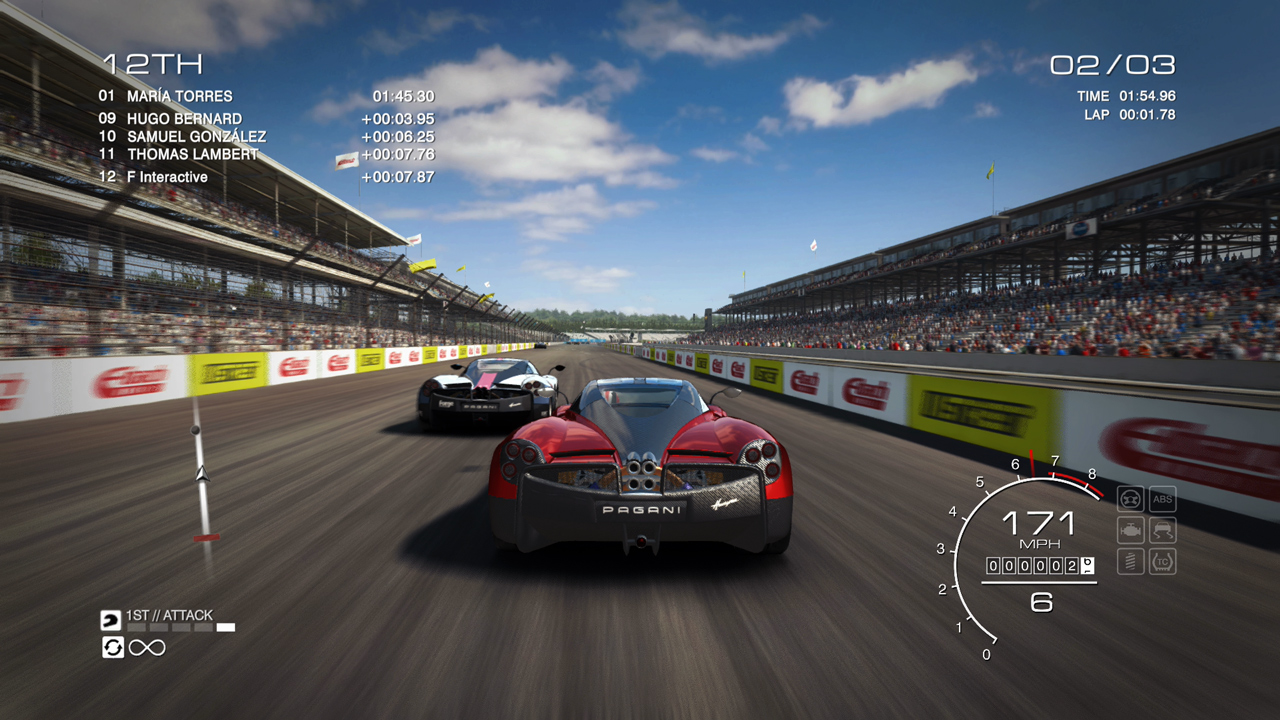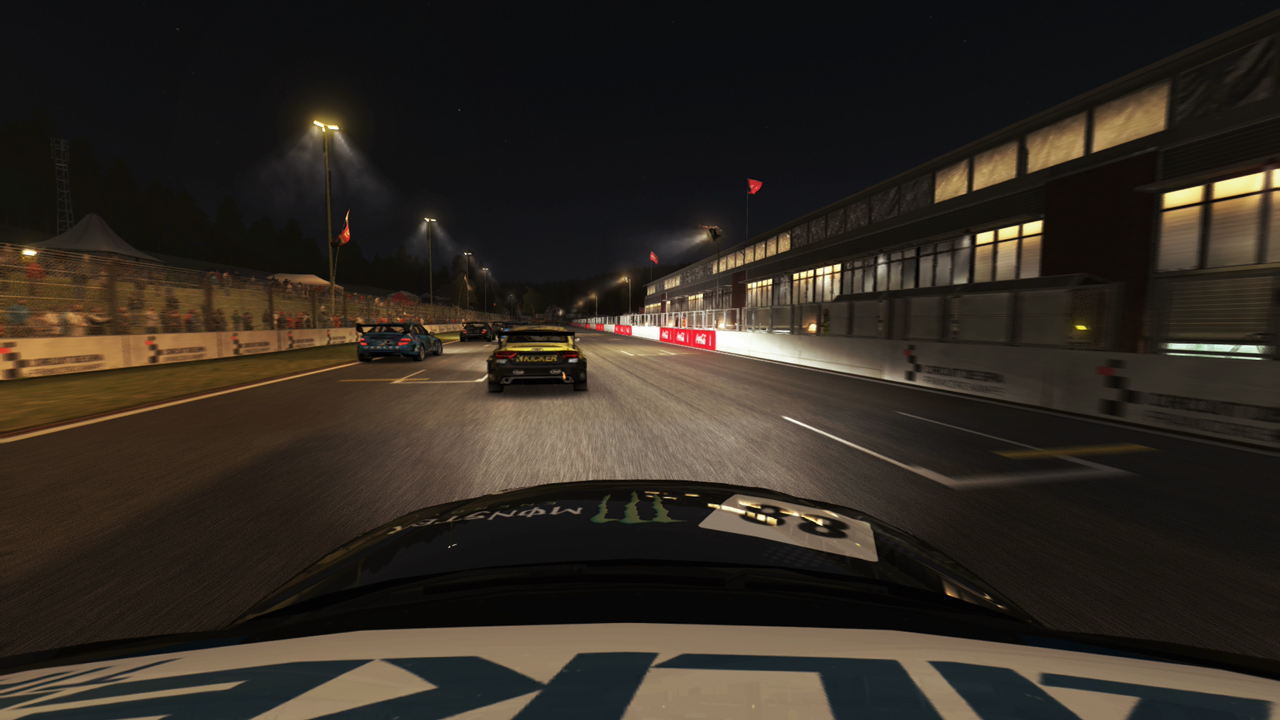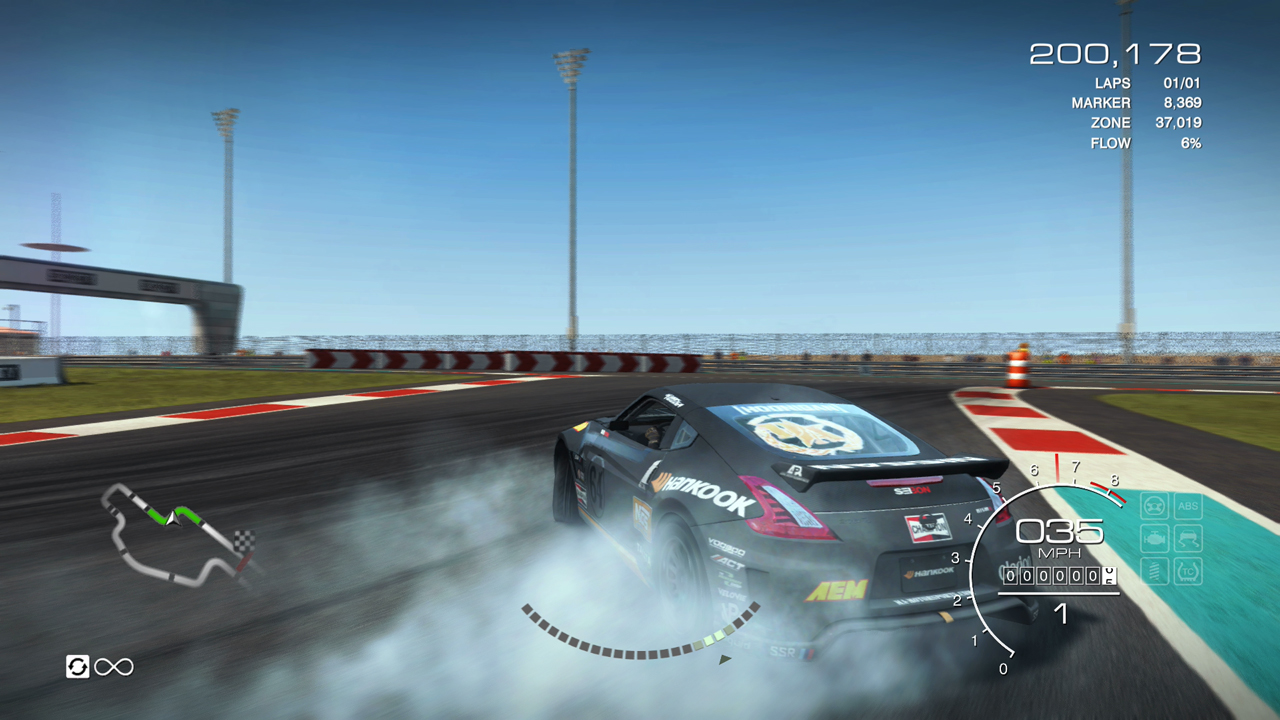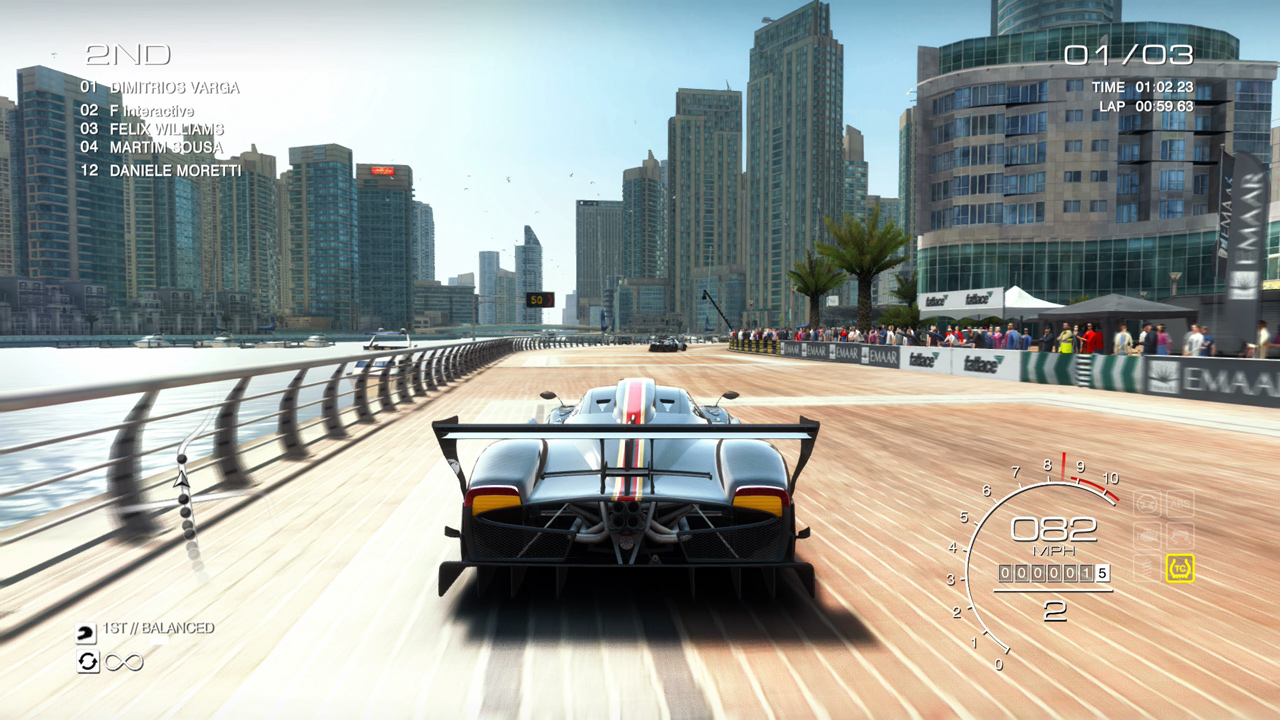As far as realistic racing sims are concerned, I did once go through a period where I was hopelessly addicted to the time trials in SEGA Rally on the SEGA Saturn. Metropolis Street Racer also drained many hours of my life collecting Kudos while cranking through the streets of London. However, since then I’ve not really delved into many racing sims over the years. At least, not within the confines of how motorbikes and cars work in the real world. It’s a good job then, that GRID Autosport is more than willing to refresh my memory and help me climb to pole position. Remember Ricky Bobby, “If you ain’t first, you’re last!”
Originally released back in 2014, GRID Autosport takes several racing disciplines across a hundred tracks and an equal number of cars while testing the abilities of all levels of skill. The beginner can cut their teeth into the tarmac with an auto-brake feature accompanied by a visual guide track that gives the player a good idea of where to position the car on the road. The difficulty above will leave full control to the player minus the gears while keeping the guide track set with a color indicator to hint at where to brake. The higher the difficulty, the more aids are stripped away, giving even the most seasoned racer a menacing challenge without interfering with the L-plate drivers on the road.

One thing’s for certain, GRID Autosport wants to teach and evolve the abilities of the player without convoluting the brain with too much information. Everything is so well presented and explained without showing off by spouting out motor jargon or filling the screen with bar charts and numbers. Each driving class is introduced nicely, with a career mode that focuses on five of them. The open-wheel GP, for example, will give you the speed and power needed to feel like Lewis Hamilton burning rubber at 200 miles per hour. Street racing, on the other hand, tests how good your handling skills are on tight corners and chicanes across Chicago, Dubai, Hong Kong, and so on.
The close quarters scramble of touring car racing will have you finding the best route amidst a competitive fleet of engines. Whereas endurance will force you to manage the wear and tear of a single set of tyres throughout an 8-minute long loop. Then there’s the tuner class, a mixture of events where it’s all about how you control your vehicle – whether that be drifting around corners in style, or taking a muscle car to the finish line. On top of that, there are drag racing modes to fine-tune those gear-swapping skills or the collision-heavy chaos of destruction derby.
This may sound utterly overwhelming to a complete beginner, but the way everything is divided up allows the player to concentrate on class preference and slowly help build the confidence to become more flexible across the board. The five classes in career mode are broken up in seasons with more XP to earn the higher the difficulty that’s been chosen. Sponsorships such as Monster Energy Drinks and Razor will give you a set of vehicles to drive and a position objective to build further XP.

During the race, pressing the d-pad – or flicking the right stick depending on controller layout – in multiple directions will have your navigator tell you what position you are in, how much damage you have received, and what place your teammate currently stands at. You can even tell the navigator to order your teammate to either hold their position or work to press forwards. How much this feature really affects team tactics is something that I’m not really too sure of. However, the idea of staying informed with a push of a few directions is a cool little feature that adds plenty more atmosphere and drama to the race.
When it comes down to controls, the lack of a potentiometer in the triggers of the Joy-Con or Pro Controller can be a sticking point. Not being able to ease onto the accelerator can somewhat diminish full control of the car. Thankfully, there are ways around this, one of them being full support for the official GameCube controller – which does contain potentiometers in the triggers should you happen to own one with the required adapter. If that seems to be out of the realm of possibility, then configuring the accelerator and brake to the right analog stick is the best way to go. While this may sound impractical for those used to the traditional method of pinching the right trigger, it soon becomes second nature with a little bit of practice and perseverance. It’s the option I decided to choose for and I found it to be perfectly fine and practical to play this way.
Speaking of configurations, GRID Autosport is full of them. The most notable one being able to change the visuals to suit gameplay preferences. The default setting has the graphics set at the highest quality while being locked at 30 frames per second, while switching the game into performance mode will double those frames to 60 and sacrifice some of the beef of the visuals. There’s also a battery saving mode that uses even less horsepower to run the game – promising to extend portable gameplay time further. It’s a small addition, but none-the-less a very useful one depending on how serious you are when it comes to counting frames and crunching corners. Personally, I used graphics mode for the majority of the time, as the higher frame rate didn’t make much of an impact on my current skill level.

Most of my time with GRID Autosport was spent playing before a day one downloadable texture pack arrived, promising to improve the visuals of the cars themselves. The game already looked great before the 2GB update went live and it looks even better now. The graphics aren’t quite as intricate in detail to, say, the Forza Horizon series, but they do hold up perfectly well in motion. The real-time reflections across the hoods of the cars give the gameplay a more organic feeling and the excellent draw distance is great for plotting the road well ahead.
There doesn’t seem to be any form of a weather system implemented in GRID Autosport, and, from what I’ve played, the night time tracks also only seem to take effect in endurance mode. It never took too much fun away from me personally, but the lack of rain and wet surfaces was something that I did quickly cotton onto. Another issue, for early adopters at least, is the lack of multiplayer mode both locally and online. Out of the gate, GRID Autosport is a solo affair despite what February’s Nintendo Direct may have led us to believe. Feral Interactive has promised that it will be an added feature at some point, but haven’t specified exactly when that will be. For now, though, there is still more than plenty here to get stuck into.
It’s a realistic racing sim by heart with the left ventricle pumping out the blood cells of an arcade racer. However, don’t go in expecting to tear around corners easily like it’s Mario Kart or Burnout Paradise. Although, the sense of incredible speed and lenient bouncy collision damage does build a bridge between the genre styles. With that said, there is a demanding learning curve that begins to become rather steep from the expert difficulty onwards. There are five difficulty settings in total and the difference between professional and expert is night and day. I would find myself easily taking pole position on the professional difficulty, but when I would notch it up a level to expert, I would often struggle to keep up with the pack. This isn’t a criticism as such. After all, the game does go above and beyond in helping the player out. If anything, it provides plenty of reason to want to learn the tracks inside out to become one with the vehicle.

One thing that really stands out is how wonderfully implemented the HD Rumble is. You can really feel the car changing gears and the traction of the wheels when skidding around corners. Driving over the rumble strips that curb the track has an almost eerie realism as the feedback chudders in the palms. I highly recommend putting the camera view in first-person with the bonnet leading the way. Make sure the HD Rumble is set to max with a big pair of headphones hugging the ears. Finally, keep both eyes five to six inches away from the screen for what is a truly remarkable racing experience.
The Nintendo Switch may not be riddled with racing simulators, but GRID Autosport has set the benchmark. It caters so well for someone like me who’s a casual racer at best, and it doesn’t take a genius to see how its interface and design has been engineered for petrolhead veterans craving a challenge. It may lack multiplayer out of the gate and be half a decade old at this point, but it’s still a solid racer nonetheless that’s a worthy addition to the hybrid convenience of the Nintendo Switch.
Version Tested: Nintendo Switch
Review copy provided by Feral Interactive





